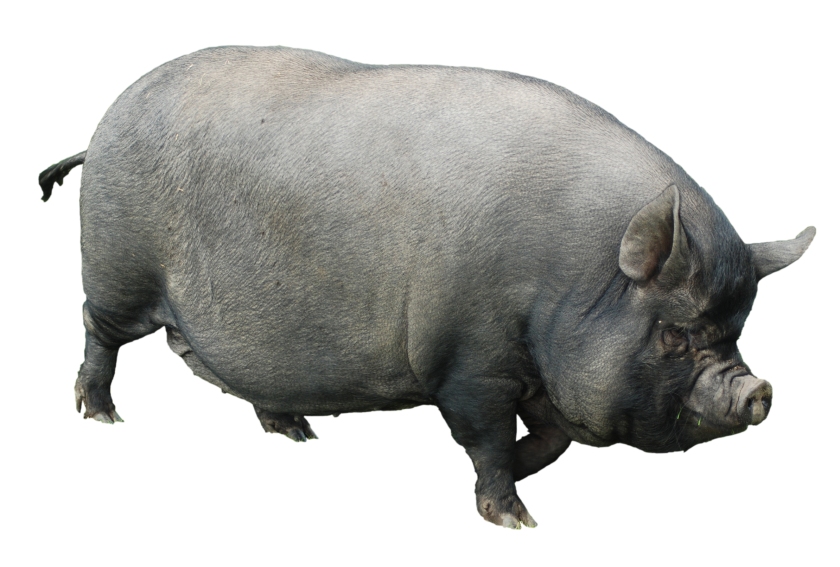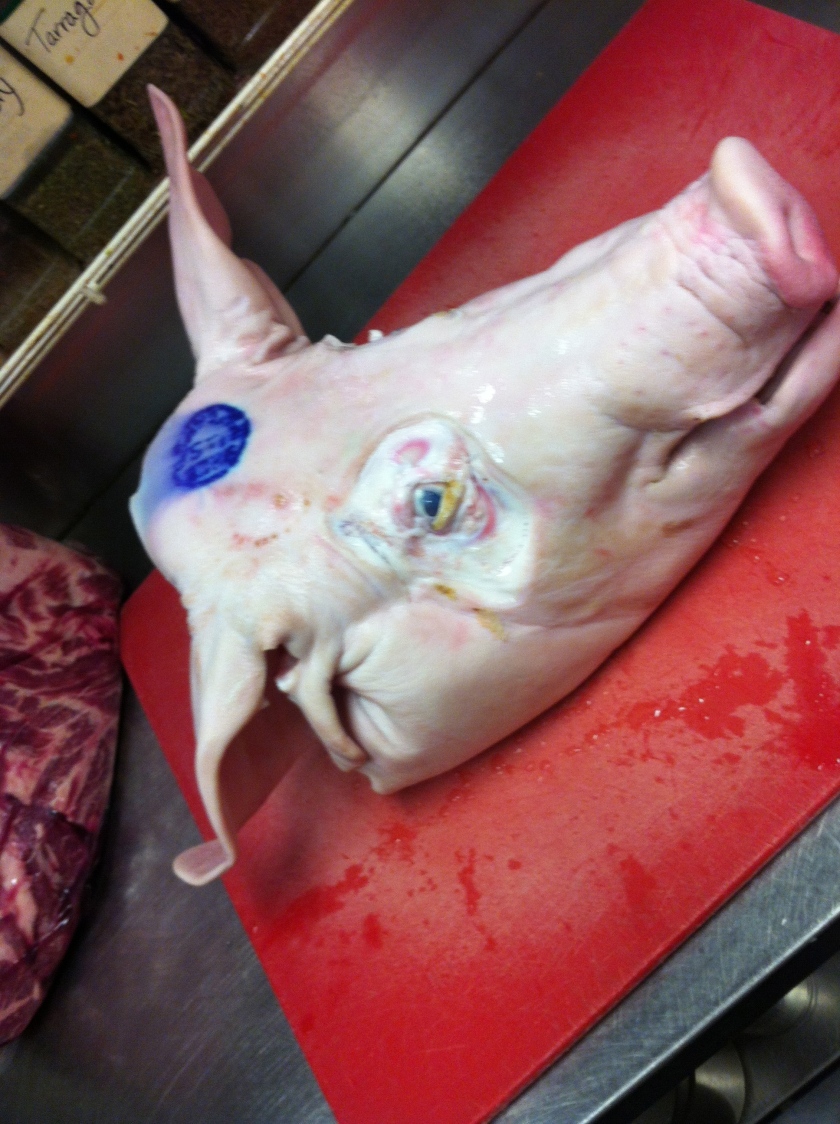As the head cheese rests in my fridge, I, in the meantime, to forget about all the coagulation in my kitchen, distract myself learning a few things.
Collagen
First I turn to Harold McGee. In his book, On Food and Cooking, he makes a brief mention of collagen, a protein responsible for connecting tissues, comprising “about a third of all the protein in the animal body” (130). Because it’s mostly concentrated in the skin, tendons, cartilage and bones, it makes sense that Diana Kennedy emphasized the importance of using the skin from the cheeks. According to McGee, the word for collagen, etymologically Greek, means “glue-producing.” When heated in water, it can dissolve into gelatin. In other words, when cooked, it softens. (As it turns out, we and other animals are born with more collagen, and as we age it disappears; hence why veal is more gelatinous and tender.)
While I was picking apart the head, tugging at the jaw and digging my fingers through the eye sockets and other cavities, I discovered all types of different fat compositions. The snout was purely skin and fat.
Collagen, according to Wikipedia, is the most abundant protein found in mammals, making up a quarter to a third of whole-body protein content. Its structure is long and fibrous, and its repeating sequence of amino acids, and its composition of glycine, proline and uncommon derivative amino acids, make it both unusual and a source of interest among microbiologists. But, what’s important to know is that its whole raison d’être is to connect tissues together: fat to skin, muscles to tendons; and, when collagen is hydrolyzed–that is, irreversibly isolated and cleared of any debris–it becomes gelatin. It is the gelatin that will hold all the meat and flavor together in the head cheese. Not incidentally, pig head is a major source of commercial gelatin.


